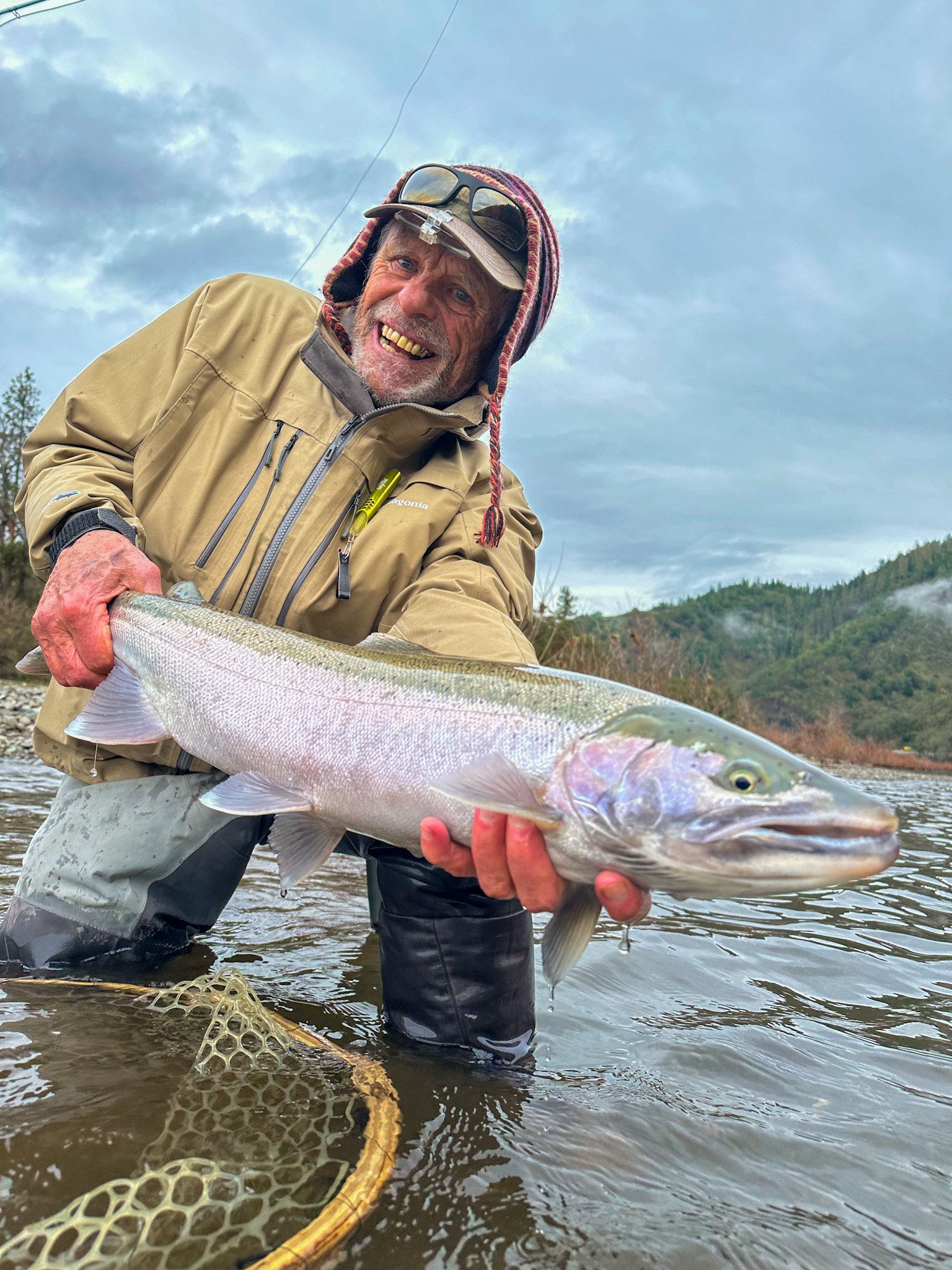Brandon Just got back from a great week Bonefishing in Southern Yucutan with good friend and client Ryan Tuck. Now back state side Worthington Fly fishing is busy guiding the winter steelhead waters of southern Oregon…
Worthington Fly Fishing Bonefishing Trip & Winter Steelhead
Ashland, Oregon Fly Fishing Trips
SAGE SONIC 904-4 guide fly rod review
Every once in a while a new fly rod comes out that stands out to me. There are many, Many great options out there, so it takes some stand out elements for a new stick to be entered into my arsenal of guide rods.
First and foremost, the rods we provide on our guided trips have very distinct applications in mind so all the rods we fish are filtered through that lense. I wanted to add another powerful 4 weight into the lineup for this Summers trout fishing so I gave the Sonic a serious look over, and ultimately, grabbed one. Now, after a few weeks of fishing it, here’s what i’ve found…
First Impressions
It’s a good looking fly rod, classic Sage. Great cork, nice color and thread wraps.
First casting impressions and Lines for the Sonic
It’s a powerful rod, classic Sage. I loaded it up with an Airflo wf 5 and it’s just about right. I could see stepping down a little to a 4.5 for more general applications or for the angler that casts longer distances with smaller dry flies. I could also see running a straight 4 for advanced casters who do not need a lot grains to get the feedback they need for good casting. With a 5 wt line on there, the rod loads up with a short amount of line out the tip and feels really good in the mid range. The 5wt line engages more of the rod to get more power from the blank but doesn’t crush the action at all.
I love this rods power. It’s got a classic Sage progressive taper, meaning the more you lean on it, the more it bends. You can really control this rod and ask it to play up while still having a really nice light rod in hand. It is fast, it is powerful, it might be a little loo much for some novice casters at first, but line it up a little and it’s really sweet. Line it up slows the rod down a bit too which will suit most anglers out there. You’ll stil get excellent recovery but with all the line speed, accuracy and crispness.
Price and Value
This rod reminds me a whole lot of the Sage ONE. Which is not a bad thing. But at nearly half the price. It features the same Konnetic Technology as the ONE and other Sage Rods I have in the quiver. I’ve found Konnetic Tech rods break less then some others which is huge plus for me. Keeping sticks on the water and out of the penalty box is super important. I think in the last 5 years I’ve only had a Konnetic rod break once.
What I’ve fished on it
Mostly dry dropper and even dry-dropper-dropper. I fished some indo rigs and have even had a chance to use it for a few dry fly sessions when our Native Redbands were sipping BWO duns. The Rod shines in all of these applications. It was super accurate for the dry fly fishing and delivered nice, snappy mends once your flys were on the water. There is plenty of power in the rod to push the boundaries of fly size and I did. I tried some Golden Stone drys with large dropper flys pre hatch and the rod had no issues what so ever. You can almost think of this rod as a 4.5 with regards to what it can do. Love it.
Conclusion
It’s a fantastic fast, powerful 4wt from Sage. I expect this rod is going to see tons of use by my clients and be a favorite this spring and summer on our local waters.
How to Make Fly Tying Shanks
Make your own Steelhead or Trout shanks. Easy, cheap, & customizable. Tie your own flies on your own shank.
I started tying shank flies before there were too many commercial options around. So I’ve stuck with it, and made my own for years. These are solid, cheap, easy and oh so versatile. There’s something cool too about the foundation of you swing flies being something you crafted by hand. They’re all that fishier for it!
You’ll Need:
Spinner Forms: These are borrowed from the lure making world and come in a number of lengths. Creative folks can make three shanks per form. Considering most packs are 50 or more, you’ll have a decent supply. I have found these at Sporting goods stores and online retailers. You’re local tackle shop also likely has them, if they exist anymore.
Needle Nose Pliers: Do I need to explain these?
Grinder: I use a hook sharpener, though anything in your shop that fits the bill will work. When you cut the spinner forms, any ragged edges need to be filed down or you risk cutting thread while tying, or having a sharp edge on your fly which could find your line or trailing wire.
Tying Vise
I have found these home made shanks work great for barbell eyed flies if you turn the eye up, and great for unweighted flies if you leave the shank true. If you are really carful and precise with your plier and vise work, I can usually mount a 1/4” bead on too for another weighted fly option.
Happy Tying!
Muddy Waters
Is that enough buffer?
I’ve always wondered how resilient streams are to erosion caused by industrial logging operations. Consider the capacity of mature old growth forest ecosystem to hold in precipitation and release it slowly. Contrast that with a mono culture of 30 year old trees next to large sections of barren earth. Water, sediment and junk just flashes into our favorite rivers after clear cuts. The barrier left along fish bearing streams is a joke. Is 3 trees and some slash really enough to prevent severe sedimentation?
Just look next time you see logging on your favorite stream or river, it’s obvious it’s to little protection.
Just saying.
We all need lumber, but common, we’re this desperate?







